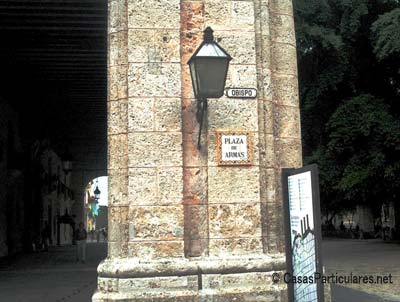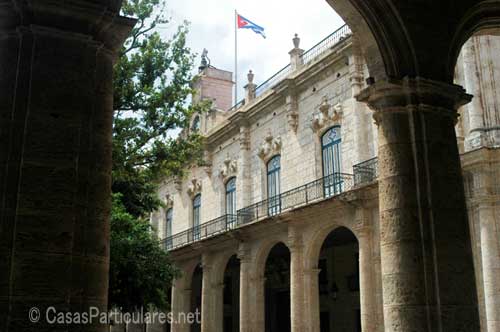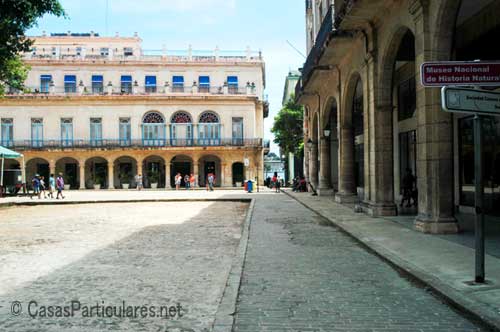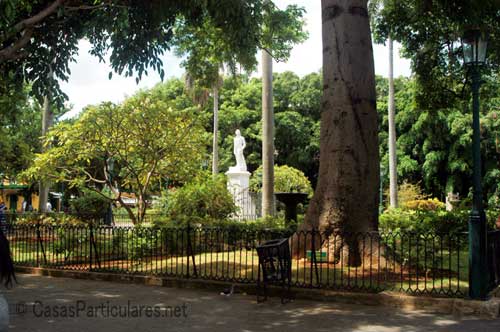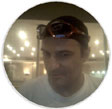Plaza de Armas, the Point Zero of Old Havana
By Danil Ren, representative of the agency, translated from Spanish by Danil Ren.
Don't confuse Point Zero with Kilometer Zero, which is located in the National Capitol. Even if the Capitol seems to be the starting point for an excursion to Old Havana, the true place to begin is Plaza de Armas, because it is precisely there where the Real y Pontificia Universidad de San Gerónimo de La Habana, that is, the initial name given to the city of Havana was founded.
The Plaza de Armas was built in 1519, initially it was also called Plaza de la Iglesia (Church's Plaza) because the Parroquia Mayor (Major Parish), the first church of Havana, occupied this place. Despite this, it was destroyed in 1741 by a thunderbolt. The Plaza de Armas is the most ancient place in Old Havana, and, during the colonial epoch, it represented the administrative center of the city.
The Cardinal Points of Plaza de Armas
The Palacio de los Capitanes Generales, which is located on the western side of the plaza was the base of the government for a long time, until 1913, then, until 1967, it was the city hall of Havana, and, starting from that year, it was converted to what it is now, the Museum of the City.
From the side of the bay, there is the Castillo de la Real Fuerza (Real Force Castle), which, during the entire colonial epoch, kept the treasures of the city imported from Spain. Aside from the castle, on the left side, there is the Templete, which commemorates the place where the city was founded. It seems that it was there that the Spanish celebrated the first mass and the first chapter of Havana in 1519. On the right side of the Templete, there is a large palace, erected by the Count of Santovenia at the end of the XVIII century, which is now the Santa Isabel Hotel.
From the southern side, there is another palace, which, in colonial epoch was called Palacio del Segundo Cabo, founded in 1776 and inhabited by the Cuban General Capitan's right hand. Today is the base of the Cuban Institute of the Book. From this same side we also find the Mural Art Museum as well as other cultural institutions.
In the middle of the Plaza de Armas there is a park with the statue of the Fernando VII Spanish ruler at the center of it. Starting from 1955, a new statue was placed the one of the homeland fathers, Carlos Manuel de Céspedes, by the artist Sergio López Mesa.
The place was a public site until the edification of the Real Force Castle. Starting from this time, it was destined to military exercises and, for this reason it took its name, Plaza de Armas.
Beyond the Plaza de Armas
On the southern side of the Plaza de Armas, we also find a small numismatic carnival where people sell old books, ancient objects, classical cameras, collectable coins, and so on. Most of these objects are old books and most of them are sold at high prices, even though similar books can be found in most national bookstores at very low prices (in Cuba, all books are considered old). Therefore, you can buy from this carnival without being overcharged only if you know that the book you are looking for is unique to this market. Our general advice is: "Don't get involved with old items in Cuba if you don't know what you are doing".
Starting from Plaza de Armas, you will reach all the museums and cultural places of the historic center. It will be mandatory to browse Obispo, Oficios and Mercaderes streets, the latter leading to another very important place in Cuba: the Plaza de San Francisco De Asís, popularly known as the Pigeons' Plaza and, from the four exits of Plaza de Armas, you can reach many more places, for example, if you head out the north exit, you'll reach the Cathedral of Havana.
It takes more than one day to visit Old Havana, but Plaza De Armas is definitively the headquarter from where all the excursions start from, just like in role playing game, where, from a common place, all the quests start.







